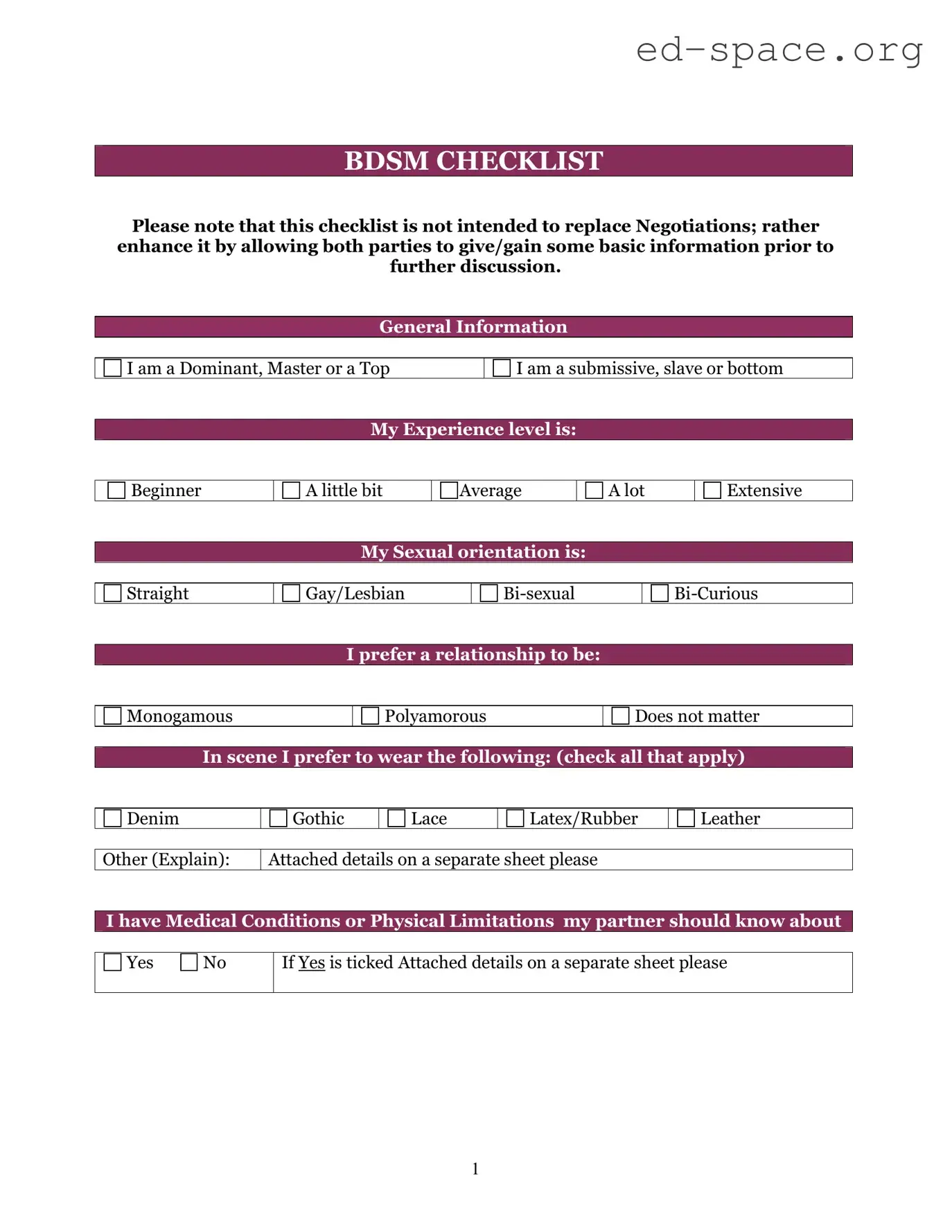What exactly is a BDSM checklist?
A BDSM checklist is a comprehensive document that individuals use to communicate and express their preferences, limits, and interests in BDSM activities. These checklists can range from basic to highly detailed, covering various practices within the BDSM spectrum, including bondage, discipline, dominance, submission, sadomasochism, and more. They serve as a valuable tool for partners to discuss and establish consent and boundaries before engaging in any BDSM play.
Why is it important to use a BDSM checklist?
Using a BDSM checklist is important for several reasons. First and foremost, it promotes open and honest communication between partners, which is essential for building trust and ensuring mutual consent. It helps individuals clearly express their desires and limits, reducing the risk of misunderstandings and potential harm. Additionally, a checklist can facilitate exploration by introducing partners to activities they may not have previously considered, enriching their BDSM experience.
How should one fill out a BDSM checklist?
Filling out a BDSM checklist should be approached with honesty and self-reflection. Individuals should consider each item on the list carefully and indicate their level of interest or disinterest. This can often be done on a scale, ranging from "definitely interested" to "hard limit," meaning something they are not willing to try. It's crucial for individuals to communicate openly and ensure their responses accurately reflect their comfort level and curiosity.
Can a BDSM checklist change over time?
Yes, a BDSM checklist is not a static document and can change as individuals explore and grow within their BDSM journey. What may initially be a limit for someone might change to an interest as they gain experience and build trust with their partners. It's healthy for BDSM practitioners to regularly revisit and update their checklists to reflect their evolving interests and boundaries.
Is it necessary to share my BDSM checklist with my partner?
Sharing a BDSM checklist with your partner is highly recommended as it lays the foundation for consent and understanding within the relationship. It enables both partners to be on the same page about what each other is willing to explore and establishes clear boundaries. Sharing and discussing the checklist can enhance intimacy and trust, making BDSM practices more enjoyable and safer for everyone involved.
What should I do if my partner and I have different interests according to our BDSM checklists?
Differences in BDSM checklist responses between partners are not uncommon and can be addressed through open, respectful dialogue. It's important to discuss each difference individually, seeking to understand your partner's perspective without judgment. In some cases, compromises can be found that satisfy both partners' needs and boundaries. It's also crucial to recognize that not every interest needs to be explored if one partner is uncomfortable.
Are BDSM checklists only for new relationships?
No, BDSM checklists are valuable for both new and established relationships. While they can be particularly helpful for new partners to understand each other's desires and limits from the beginning, long-term relationships can also benefit from revisiting and updating their checklists. This process can reinvigorate the relationship, introduce new activities, and ensure continued respect for each other's boundaries.
How often should a BDSM checklist be reviewed or updated?
There's no set frequency for reviewing or updating a BDSM checklist, but it's a good practice to do so periodically. This could be prompted by changes in interests, the introduction of new potential activities, or simply the desire to reflect on your BDSM journey. Some couples choose to review their checklists annually, while others do so whenever one partner expresses a need for adjustment. The key is maintaining open communication and using the checklist as a living document that grows with your relationship.






